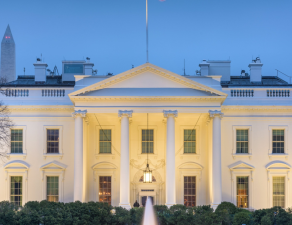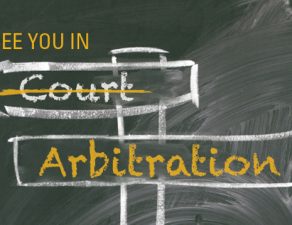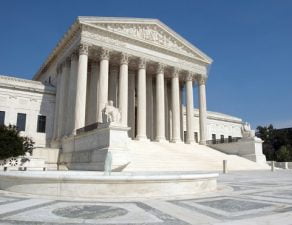Consumer and Employment Arbitration – Six Things to Look for in 2017
Over the past several weeks I’ve blogged on the state of arbitration on the eve of the election, what the election results mean for arbitration, and how my predictions for 2016 worked out. Now it’s time for me to make my bold, fearless predictions for 2017. Two fair warnings: 1) I borrow heavily here from my recent blog posts; and 2) I batted .833 in 2016.
- President Trump Likes and Uses Arbitration
- All the Anti-Arbitration Legislation is Really DOA
- SCOTUS’ Support for Arbitration Will Continue Unabated
- Expect Dodd-Frank to be Repealed and Replaced
- Expect Less Regulation – Starting with the CFPB
- Expect New Love for FINRA Arbitration
- President Trump Likes and Uses Arbitration
As I’ve blogged before, President-elect Trump believes in arbitration and uses the process. In 2012, he won $5 million in a dispute with a former Miss USA contestant who defamed the pageant, which he owned. Last year, Mr. Trump filed an arbitration claim against NBC after the network cancelled a contract to televise the Miss USA and Miss Universe pageants. He also won an Internet domain name arbitration, back in 2010. And I read in the Indisputably blog that even Mr. Trump’s agreement with campaign volunteers had a PDAA giving the campaign the unilateral right to require arbitration of disputes.
Prediction: Look for Executive Orders expanding use of arbitration by the federal government, and EOs undoing President Obama’s anti-arbitration directives. For example, President Obama’s July 2014 Executive Order 13673, barring companies with federal contracts valued at over $1 million from mandating arbitration of Title VII or sexual harassment or assault claims, is in my opinion a Day One goner.
- All the Anti-Arbitration Legislation is Really DOA
As we entered 2016, I wrote Consumer Arbitration: Five Things to look for in 2016. Among my predictions was that doomed to fail were legislative efforts by Democrats to amend section 2 of the Federal Arbitration Act to ban mandatory predispute arbitration agreements in contracts involving consumers and employees. Said my blog: “The Arbitration Fairness Act is still DOA; so is the Investor Choice Act.” At that time. A new, albeit more focused, candidate emerged for my DOA list, to wit the Restoring Statutory Rights Act (“RSRA”), introduced February 4th by Senator Patrick Leahy (D-VT) and co-sponsored by Senator Al Franken (D-MN). Not only did I think there was no chance the RSRA would be approved, but if the bill defied the odds and was somehow enacted, I was sure it will be held unconstitutional because it was retroactive. In other words, the RSRA was not only “Dead-on-Arrival,” but if it somehow it was revived, I predicted that it would be “Dead Man Walking.” Or maybe the “Walking Dead.”
I have the same views about the Justice for Telecommunications Consumers Act – S. 2897 – which would amend the FAA to ban mandatory PDAAs in a wide range of telecommunications contracts involving consumers, such as cell phones, land lines and cable and internet service. There has been no action on this bill, which was introduced in April.
Prediction: These anti-arbitration bills will die when this Congress fades to black the end of this year. And there is zero chance they will be enacted in the next Congress. And if any of them are reintroduced and by some miracle passed, President Trump will surely veto the legislation.
- SCOTUS’ Support for Arbitration Will Continue Unabated
With the current Supreme Court vacancy and because some of the major cases involving arbitration were 5-4 decisions, a Clinton victory might have portended a shift away from the Court’s long-standing support of arbitration and the FAA. For example, potential Clinton nominee Senator Elizabeth Warren has been a long-term critic of mandatory arbitration. Any Warren nomination is now off the table, as is Judge Merrick Garland’s[1] nomination.
Predictions: Who will President Trump nominate to fill the Scalia vacancy? While at this point it’s hard to predict a single name – who may or may not come from the list compiled by candidate Trump – it’s a safe assumption in my view that whoever it is will be supportive of arbitration.
As for what’s on tap case wise for SCOTUS we should remember that the Court in late October granted certiorari in another Federal Arbitration Act preemption case, this one involving an arbitration agreement in a nursing home admission agreement signed by an attorney-in-fact. The case on appeal is Extendicare Homes, Inc. v. Whisman, 478 S.W.3d 306 (Ky. 2015), reh. den. (Feb. 28, 2016). The petition for certiorari was granted without explanation in an Order dated October 28th (see case no. 16-32, sub nom. Kindred Nursing Centers v. Clark, page 1). I predict that SCOTUS will reaffirm the preemptive effect of the FAA over state laws limiting arbitration.
Also, readers of my blogs may recall how I fared on one of my predictions for 2015. To refresh your recollections, prediction number 4 for 2015 was “SCOTUS will rebuke the National Labor Relations Board on its anti-arbitration policy.” That didn’t happen in 2015, but it turns out I may just have been too aggressive in my timetable. In recent months, three petitions for certiorari have been filed seeking SCOTUS review of this very issue. It’s a sure bet SCOTUS will grant certiorari in one of the four cases involving whether the Federal Arbitration Act trumps (sorry) the National Labor Relations Act when it comes to enforcing arbitration agreements, most likely NLRB v. Murphy Oil because it involves NLRB as a party.[2] My view is that the Supreme Court will hold that its ruling in Gilmer v. Interstate/Johnson Lane Corp., 500 U.S. 20 (1991), requires the NLRA to expressly ban arbitration if that was the intent of Congress. As SCOTUS said in CompuCredit Corp. v. Greenwood, 565 U.S. 7 (2012): “Had Congress meant to prohibit these very common provisions in the [statute], it would have done so in a manner less obtuse than what respondents suggest.” Time will tell if I must again eat this prediction.
- Expect Dodd-Frank to be Repealed and Replaced
On September 9, Financial Services Committee Chairman Jeb Hensarling (R-TX) introduced the Financial CHOICE Act. If enacted, the 513-page H.R. 5983 would essentially repeal and replace Dodd-Frank and would have far-ranging impact. A Committee Release from June announcing the plan to introduce the CHOICE Act promised to “fix the Dodd-Frank-Volker Rule… Concocted in 2010, the rule was designed to prevent banks from engaging in proprietary trading. Of course, not one of the 450 institutions that failed in 2008 and 2009 failed due to proprietary trading.”
Prediction: While this bill will not be enacted this year because of the certainty of a veto from President Obama, what happens in 2017 is an interesting question. Candidate Trump was very clear about his wanting to repeal and replace Dodd-Frank, but pressure to reconsider is mounting from some interesting sources. Days after his election, Bloomberg reported that the President-elect’s transition team reaffirmed Mr. Trump’s intention to dismantle Dodd-Frank. Also, dismantling some of the more onerous Dodd-Frank rules made Mr. Trump’s “Day One” list, according to a December 6 story in Investor’s Business Daily. On the other hand, outgoing SEC Chair Mary Jo White on December 8 cautioned against completely gutting Dodd-Frank, according to Reuters. And the Wall Street Journal reported on December 8th that JPMorgan Chase & Co. head James Dimon said in a recent speech: “We’re not asking for wholesale throwing out Dodd-Frank.”
On balance, I think President-elect Trump will fulfill his campaign promise to repeal Dodd-Frank and replace it with another statute along the lines of the CHOICE Act. While the new law will incorporate some features of Dodd-Frank, the current law’s authority for SEC and CFPB to possibly develop regulations banning, limiting, or conditioning predispute arbitration clauses will not make the cut, in my view.
- Expect Less Regulation – Starting with the CFPB
President-elect Trump promises there will be less regulation, starting on January 20 when he intends to issue Executive Orders rolling back many of President Obama’s EOs, and declaring a temporary moratorium on new regulations. Regulatory burdens not assailable by EOs will be addressed by orders to the new agency heads to initiate corrective rulemaking. Here are some likely targets (I’ve omitted discussion of other anti-arbitration regulations. See here for the full list).
- Consumer Financial Protection Bureau: Dodd-Frank section 1028 directs the CFPB to study the use of PDAAs in contracts for consumer financial products and services and later report to Congress, and to ban, limit or impose conditions on their use if such action “is in the public interest and for the protection of consumers.” What would be covered? Any regulation “would apply generally to the consumer financial products and services that the Bureau oversees, including credit cards, checking and deposit accounts, certain auto loans, small-dollar or payday loans, private student loans, and some other products and services as well.”
After issuing the required Report to Congress, the CFPB in May 2016 issued a proposed rule that would: 1) ban class action waivers (“CAWs”) in predispute arbitration agreements in contracts for consumer financial goods and services; and 2) require regulated financial institutions to file customer claims and awards data with the CFPB, which the Bureau may choose to publish. While there’s no final rule yet (CFPB is analyzing the 51,801 comments contained in 6,246 comment letters), the Bureau on November 30th updated its 2017 rulemaking agenda to reveal that it intends to publish a final arbitration rule in February 2017.
The entire status of the Bureau is now somewhat up in the air. A divided DC Circuit in PHH Corporation v. Consumer Financial Protection Bureau, No. 15-1177 (DC Cir. Oct. 11, 2016), held that the Consumer Financial Protection Bureau’s structure, which has a single Director with virtually unlimited, unchecked authority, is unconstitutional. Rather than Order the Bureau’s dismantling, the Court restructured it by declaring the CFPB an executive agency reporting to the President, headed by a Director terminable at will – not for cause – by the President. CFPB sought a rehearing en banc in November; it’s pending.
Prediction: Nothing that has transpired since the election has caused me to change my views about the CFPB’s arbitration rule or for that matter the future of the CFPB. In fact, if anything I’m more certain my predictions will come to pass. For example, the House Freedom Caucus has released a report to President-elect Trump urging that the incoming administration roll back more than 200 rules and regulations it considers wasteful. The First 100 Days: Rules, Regulations, and Executive Orders to Examine, Revoke, and Issue, was announced in a December 14th Press Release from Rep. Mark Meadows (R-NC). Nestled on page 20 of the 21-page Report is item number 215 – the Consumer Financial Protection Bureau’s proposed arbitration rule.
Also, I believe President Trump will terminate Director Cordray, acting under authority of the PHH case. The new CFPB Director I suspect will be much more arbitration-friendly, and I believe the proposed arbitration reg will go back to the drawing board if it isn’t killed completely. Speaking of the PHH case, I predict it will ultimately be upheld. Oh, and under the aforementioned Financial CHOICE Act, which would form the blueprint for repealing and replacing Dodd-Frank, the CFPB’s structure will be transformed dramatically, and would essentially mirror the structure of the SEC, complete with “an independent, Senate-confirmed Inspector General.”
- Department of Labor – Fiduciary Standards: The Department approved a new fiduciary standard rule for those providing investment advice in connection with retirement accounts. The regulation allows for use of a Best Interests Contract (“BIC”) with investors containing a predispute arbitration agreement, but class action waivers are not In November, a federal appeals court[3] denied an application of an injunction asserting that, in purporting to adopt the BIC Exemption, DOL exceeded its authority under the APA [Administrative Procedure Act].” Other similar suits are pending in various federal courts.
Prediction: Hard to see where President Trump will land on this one, but the Reg is viewed as anti-business, so I don’t think it’s long for this world. Look for pressure to mount for DOL to step aside and let the SEC write its own fiduciary rule.
- Expect New Love for FINRA Arbitration
DOL acted favorably – at least neutrally – about PDAAs in Best Interest Contracts for ERISA accounts when all these other federal regulatory agencies were taking hostile action. Perhaps the Department sees the securities business as a case apart? Right now, CFPB, DOL, and SEC/FINRA have a consistent approach to the financial arbitration area: PDAAs are OK but class action waivers are not. I point out here that this is precisely the approach FINRA has taken for years in Rule 2268(d), and Rule 12204(d). The latter provides that an industry party “may not enforce any arbitration agreement against a member of a certified or putative class action with respect to any claim that is the subject of the certified or putative class action until: the class certification is denied; the class is decertified; the member of the certified or putative class is excluded from the class by the court; [or] the member of the certified or putative class elects not to participate in the class or withdraws from the class …”
Predictions: I’ve said for years FINRA has very investor-friendly rules. Given the new political landscape, I believe opponents of arbitration will give up the anti-arbitration ghost and instead focus on ensuring a fair process incorporating the many consumer protections in FINRA’s arbitration rules. For example:
- FINRA serves the claim on the broker with whom the investor has a complaint. This rule saves the investor time and money. Typically, other dispute resolution providers do not serve the claim on the respondent.
- The fee structure favors the investor;
- The hearing is sited where the investor lived when the underlying events occurred;
- There are hearing locations in all 50 states (at least one in each state);
- The process includes a motion-to-dismiss rule that severely limits motions made prior to the claimant resting his/her case and provides sanctions for frivolous motions;
- Parties have access to the FINRA discovery guides and codified discovery provisions in the rules
- The customer has the option of an all-public panel;
- In close calls, if the investor wants an arbitrator removed for bias, he or she is removed;
- FINRA will enforce arbitration awards in the investor’s favor;
- Awards are public, in a searchable database, and available free of charge on the web; Statistical data on the program are available on the web; and
- Investors can opt out of arbitration and into a class action.[4]
Also, while the SEC has authority under Dodd-Frank section 921 to ban or impose limitations on PDAA use in customer agreements, so far, it has not acted. I predict that it probably will finally act at some point in 2017 by doing a study of FINRA arbitration. It will not, in my opinion, ban PDAAs outright. Think about it. To ban PDAAs in customer-broker contracts, the SEC would have to find that doing so is “in the public interest and for the protection of investors.” Essentially, the SEC would be saying: “We’ve been supervising customer-broker arbitration for decades. But, you know, we just realized it’s a terribly unfair system.” On the other hand, a finding that says, “We’ve studied customer-broker arbitration and we’ve concluded that it’s a fair process. But, you know, these few changes will make it even better” is politically tenable.
Conclusion
I’m a bit reluctant to make so many bold predictions, given how utterly wrong the pollsters and pundits were on November 8. On the other hand, my past arbitration predictions over the years have been, as Larry David says, “pretty, pretty, pretty, pretty good.” And yes, my family, friends, and colleagues will attest that I correctly called the election. The arbitration world is constantly changing, and will evolve yet again next year. Doubtless there are some things that will happen in 2017 that I just don’t see coming right now. And of course, some of my predictions may not come to pass, at least not yet. We will again compare notes in a year. In the meantime, see you in the future!
——————————–
*George H. Friedman, an ADR consultant and Chairman of the Board of Directors of Arbitration Resolution Services, Inc., retired in 2013 as FINRA’s Executive Vice President and Director of Arbitration, a position he held from 1998. In his extensive career, he previously held a variety of positions of responsibility at the American Arbitration Association, most recently as Senior Vice President from 1994 to 1998. He is an Adjunct Professor of Law at Fordham Law School. Mr. Friedman serves on the Board of Editors and is a Contributing Legal Editor of the Securities Arbitration Commentator. He is also a member of the AAA’s national roster of arbitrators. He holds a B.A. from Queens College, a J.D. from Rutgers Law School, and is a Certified Regulatory and Compliance Professional.
[1] Based on a very limited sampling, Chief Judge Garland seemed to be pro-arbitration.
[2] The case below is Murphy Oil USA, Inc. v. NLRB, 808 F.3d 1013 (5th Cir. 2015), which held that “an employer does not engage in unfair labor practices by maintaining and enforcing an arbitration agreement prohibiting employee class or collective actions and requiring employment-related claims to be resolved through individual arbitration.”
[3] See NAFA v. Perez, No. 16-1035 (D.C. Cir. Nov. 4, 2016).
[4] The Bureau’s 34-page outline in support of the CFPB’s proposed class action waiver ban references FINRA’s class action rule on page 17.






